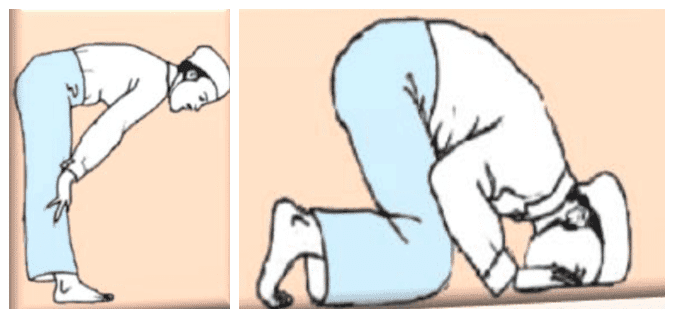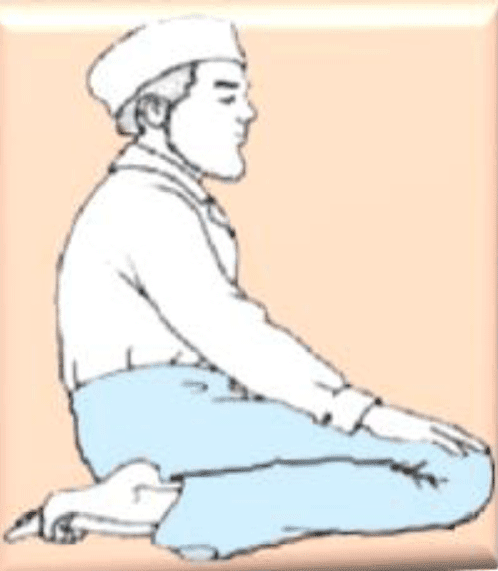Nicholas Ghantous
London, United Kingdom
The five pillars of Islam are the foundation of the religion. They define a practicing Muslim’s identity and guide Muslims towards communally shared values and service to Allah (God). The pillars consist of the profession of faith, pilgrimage, alms, fasting, and prayer. The pillar of prayer is known as salat. The five salat prayers are spread throughout the day and designed to express devoted worship and close communication with Allah. According to the Qur’an, when prophet Muhammed ascended to Heaven, he received and relayed God’s wish for practicing Muslims to pray five times a day: Salat al-fajr (dawn), Salat al-Zuhr (midday), Salat al-’asr (late afternoon), Salat al-maghrib (dusk), and Salat al-’isha (night). In Muslim countries, the time of prayer is indicated for all by a muezzin, who utters a call to prayer from a mosque nearby.

Each prayer contains a certain number of rakats, a series of postures performed during the prayer. The morning consists of two compulsory rakats, meaning the cycle of prayer will be repeated twice. In the afternoon and late afternoon, four rakats are obligatory for each prayer. Once the sun begins to set in the evening, another three rakats are to be performed by the individual, and prayers end with a series of four rakats before bed. In total, a practicing Muslim will perform seventeen rakats a day, each with seven to nine postures per sequence, totaling 119 to 153 postures performed per day. The salat regime is spiritually demanding, but it is also worth noting the physical demands and benefits that come with such a rigorous routine. Analyzing the seven key positions undertaken each day by practicing Muslims, there are many visible engagements of muscular contraction, elongation, and joint flexion that improve physical health.
The third posture performed during an individual rakat is called Ruk’u, as seen in Figure 1. The posture focuses on a straight back and legs with the hands resting on the knees. This movement is held for a duration of ten to twelve seconds. This static stance stretches the hamstrings and increases spinal mobilization through lumbar flexion. Two postures later, in the Sajdah position seen in Figure 2 on the right, participants focus on keeping seven points of contact with the ground, including feet, knees, hands, and forehead. This pose improves blood circulation to the head and gently stretches the thoracic spine and hips, increasing hip mobility.

Sajdah is followed by Jalsa, shown in Figure 3, the sixth position performed in the rakat. Jalsa focuses on sitting back on the shins with body weight distributed onto an extended foot. This posture stretches the quadriceps and promotes knee and ankle mobility, which are beneficial for basic movements such as walking and running.
The connection between musculoskeletal health and salat postures is evident, but can overall physical improvement also be predicted based solely on the regime of the salat prayers? In a 2013 article published by Sami Saleh AlAbdulwahab and the Department of Rehabilitation Health Sciences at King Saud University of Riyadh in Saudi Arabia,1 salat was studied in connection with movement control and balance. Sixty healthy males were divided into two equal groups: one group of thirty who had prayed regularly under the salat prayer schedule for the five previous years, and another group of thirty who did not practice Islam. Neither group was involved in other forms of exercise that could skew the results. After completing sensorimotor tasks to test movement control and balance, the subjects who practiced Islamic prayers had significantly better reaction times, movement velocity, end point excursion, maximum excursion, and directional control. The study concluded that the dynamic stability of Muslims who practiced salat was significantly better than non-practicing participants. Repetitive concentric and eccentric joint motion and muscle contraction was correlated with improved postural stability and balance. Actions such as maintaining body sway requires muscular reaction forces to be activated through points of contact with the ground. Postural stability and balance are heavily dependent on muscular components, which are engaged throughout the salat prayer routine.2
Islam has spiritual and material impact for Muslims worldwide. The Qur’an holds wisdom and guides spiritual journeys towards a healthy relationship with Allah for millions of people. The salat prayer is a fundamental piece of Islam. Aside from its extensive spiritual value, the Islamic routine also has significant physical benefits for its participants. By consistently incorporating static stretches and promoting joint mobilization, the daily routine helps develop a healthy and mobile foundation for a person’s body.
End notes
- Sami Saleh AlAbdulwahab et. al., “Physical Activity Associated with Prayer Regimes Improves Standing Dynamic Balance of Healthy People,” J Phys Ter Sci 25(12): 1565-1586, 2013.
- Ghazal Kamran, “Physical Benefits of (Salah) Prayer – Strengthen the Faith and Fitness,” Journal of Novel Physiotherapy and Rehabilitation 2:43-53, 2018. Images made available via Heighten Science Publications Corporation Open Access, CC BY 4.0, https://heighpubs.org/jnpr/jnpr-aid1020.php.
NICHOLAS GHANTOUS is a high school senior at the American School in London. Along with multiple sports and extracurricular activities, Nick has found a passion in the field of science, which he is looking to pursue at university after taking advanced related classes such as AP Biology, Chemistry, and Psychology over the past two years. Nick’s academic interests led him to Hektoen International to work as an intern over the summer to create an extended article of his choice alongside Dr. James Franklin.
Highlighted in Frontispiece Volume 15, Issue 1 – Winter 2023

Leave a Reply